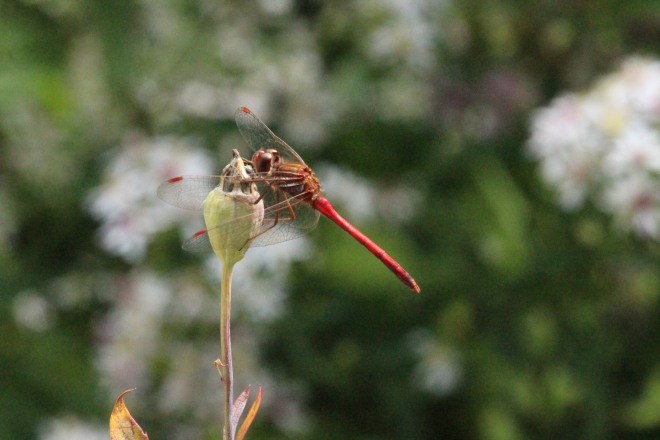The late afternoon September sun is warm and soothing. Cicadas whine loudly and a monarch butterfly nectars in our patch of sweet Joe-Pye. But another garden critter catches my eye this afternoon: the yellow-legged meadowhawk dragonfly.
Also known as autumn meadowhawks (Sympetrum vicinum), their bodies flash gem-like red, orange and amber in the sun. Perched on daylily stalks, balloon flower seed pods and hosta stems, each dragonfly swivels its head watching for flies, small bees and wasps, and other soft-bodied insects.
Adult autumn meadowhawks are present from August into early November in Minnesota. The species is common across much of the United States and southern Canada, and often is seen in yards and gardens. Their yellow or brownish legs set them apart from other types of meadowhawks, which have black or dark-striped legs. They also have minimal or no black marks on the abdomen.
When I see a meadowhawk flash in the garden, I think of the ancient history of these creatures. Scientists believe that early dragonflies (Protodonata) first inhabited Earth 300 million years ago. They speculate that Earth’s warmer temperatures, and the atmosphere’s higher oxygen content, contributed to insects growing larger than today. Fossils show that some ancient dragonflies had a wingspan of two feet. Today, most of the larger dragonflies have a wingspan of two to five inches, and meadowhawks are smaller yet at about one inch. What they lack in size they make up for in the sparkle of sun on their transparent wings and the jeweled designs of their bodies. And, after watching a meadowhawk grind up a small bee in its jaws, I’m glad they’ve evolved into smaller predators!








